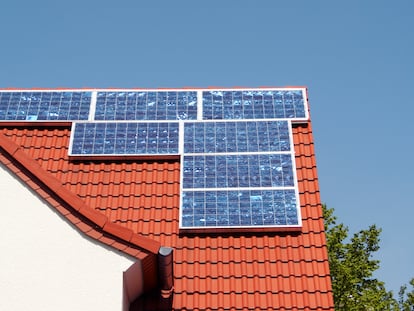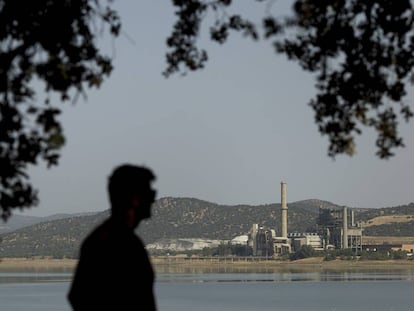Consumer associations slam Spain’s new electricity billing system
The government is seeking to encourage more efficient energy use with a tier-based model, featuring peak, low and average price periods depending on the time of the day
A change in electricity rates went into effect on June 1 in Spain, one that could see consumers save on their bills, according to the competition watchdog CNMC. The new system is not without controversy, however, with consumer organizations denouncing the fact that the measures could hit the most vulnerable households with extra costs. And depending on what kind of contract the consumer had until now, the monthly bill could actually increase by as much as 27%, according to these groups.
The new billing system, which affects consumers with a contracted power capacity of under 15kW – typically households and small and medium businesses – uses a single tariff called 2.0TD instead of the six different ones available until now.
It also introduces three time periods when electricity is either cheaper or more expensive, theoretically giving consumers a chance to save by concentrating their appliance use outside peak hours. The cheapest periods are midnight to 8am Monday through Friday, on weekends and on national holidays. The priciest tiers are 10am-2pm and 6pm-10pm on weekdays. The rest are average price times.
Consumers can now have two contracted power capacities (potencia contratada) instead of one, and it will be possible for these to be different at peak and valley times in order to increase the savings.
The system will represent savings of around 3.4% for 19 million households that were not already getting billed through differentiated time frames (discriminación horaria), said the CNMC. For another eight million who were, the new system actually represents an additional expense of €2 a month.
There is also the issue of who gets switched to the new system. Of Spain’s 27.5 million consumers, around 10.7 million are under a regulated tariff called PVPC: for them, the switch will be automatic. But the millions more on a non-regulated system will not necessarily be switched by their company, and should consult with their utility to see which plan is best for them.
According to the CNMC, changing one’s habits could result in annual savings of €200 to €300. Other money-saving tips from the regulator include not using several appliances at the same time, or ironing outside peak hours as irons tend to be among the most high-consumption appliances in a home.
But according to the Organization of Consumers and Users (OCU), the distribution of charges is likely to excessively penalize the smaller consumer and benefit the larger ones. According to the OCU, while the price rise due to the new system could be expected to come in at 8.5% for some households, it could be as high as 27.3% for others depending on the supplier. “Despite the fact that the changes only affect the regulated components of the bill, the majority of sellers that have communicated their rates for new customers are applying much higher hikes than expected, and existing customers still don’t know the surprises that their company has in store for them,” said the OCU. The organization points out that rises above the regulated hikes cannot be applied if there has been no prior warning.
For consumers benefiting from the new billing system, the OCU calculates that they could save up to €574 if they use their appliances around half the time during the cheapest period rather than all of the time at peak hours. An average customer is currently estimated to consume 29% of their electricity during peak times, 26% during average rate times, and 45% during the off-peak periods.
Meanwhile, the Facua-Consumers in Action organization claims that asking customers to use their appliances at night is “degrading” for the most vulnerable consumers. “You can’t make the consumer responsible for their bill being high just because they haven’t done the ironing or put their appliances on during the cheapest periods,” Facua states. “These times coincide with when people should be getting some rest.”
The organization criticizes the fact that the new system makes the consumer responsible for having efficient appliances, while the power companies have less of an incentive to make the necessary investments to improve the distribution networks. Facua also points out that a high percentage of families do not live in homes with high energy efficiency, do not own appliances that can be programmed to work at a certain time of the day, nor machines that can accumulate energy at cheaper hours to be used during the day.
This association adds that the most expensive times of day coincide with periods of high demand for heating or air conditioning, or when people are working from home.
Frequently asked questions about the new electricity bills
Why is this change being made? The goal of the new tariff system, according to the CNMC, is to encourage more efficient electricity consumption and to let consumers play an active role in the country’s decarbonization efforts. The monthly bill will now depend more on “when, rather than how much, one consumes.” The regulator is also hoping that more efficient energy use will reduce the need for new investments in the grid.
How is the bill broken down? Around 55% of the bill reflects the peajes (the cost of transportation and distribution) and the cargos (set by the government and linked to renewable energy costs and other expenses). Another 24.1% represents the cost of producing energy, and 21.4% is taxes.
Why the different time tiers? The idea is that the “when” now matters more than the “how much.” The prices charged for the peajes and cargos will be different depending on whether it is a peak, low or average time, and these prices will be applied to both consumption and contracted power.
What is the impact of the new tariffs? The prices of the peajes and cargos are expected to go down by 6.7% and 6.8%, resulting in savings for 19 million consumers already on a plan without hourly rates. As for nine million customers who had hourly-based pricing, the new system will make their bills more expensive by around €2 a month.
What does the consumer have to do? For consumers on the regulated tariff system known as PVPC, the change will be automatic. For those on a free market system (mercado liberalizado), the company will adapt the contract prices to reflect the change in pricing, but it may do so in different ways. Customers should check back with their utilities to see how they are adapting to the changes and whether they want to switch contracts.
Limits on profits for hydro and nuclear
Also on Tuesday, the government approved draft legislation to limit the windfall profits that hydro and nuclear plants make as rising CO2 prices drive up electricity bills. A government source said the proposed new power regulation, which will now be subject to public consultation, aimed to reduce consumers’ electricity bills by between 4% and 5% depending on CO2 prices, the news agency Reuters reported.
English version by Susana Urra and Simon Hunter.
Tu suscripción se está usando en otro dispositivo
¿Quieres añadir otro usuario a tu suscripción?
Si continúas leyendo en este dispositivo, no se podrá leer en el otro.
FlechaTu suscripción se está usando en otro dispositivo y solo puedes acceder a EL PAÍS desde un dispositivo a la vez.
Si quieres compartir tu cuenta, cambia tu suscripción a la modalidad Premium, así podrás añadir otro usuario. Cada uno accederá con su propia cuenta de email, lo que os permitirá personalizar vuestra experiencia en EL PAÍS.
¿Tienes una suscripción de empresa? Accede aquí para contratar más cuentas.
En el caso de no saber quién está usando tu cuenta, te recomendamos cambiar tu contraseña aquí.
Si decides continuar compartiendo tu cuenta, este mensaje se mostrará en tu dispositivo y en el de la otra persona que está usando tu cuenta de forma indefinida, afectando a tu experiencia de lectura. Puedes consultar aquí los términos y condiciones de la suscripción digital.
More information
Últimas noticias
Most viewed
- Sinaloa Cartel war is taking its toll on Los Chapitos
- Oona Chaplin: ‘I told James Cameron that I was living in a treehouse and starting a permaculture project with a friend’
- Reinhard Genzel, Nobel laureate in physics: ‘One-minute videos will never give you the truth’
- Why the price of coffee has skyrocketed: from Brazilian plantations to specialty coffee houses
- Silver prices are going crazy: This is what’s fueling the rally










































